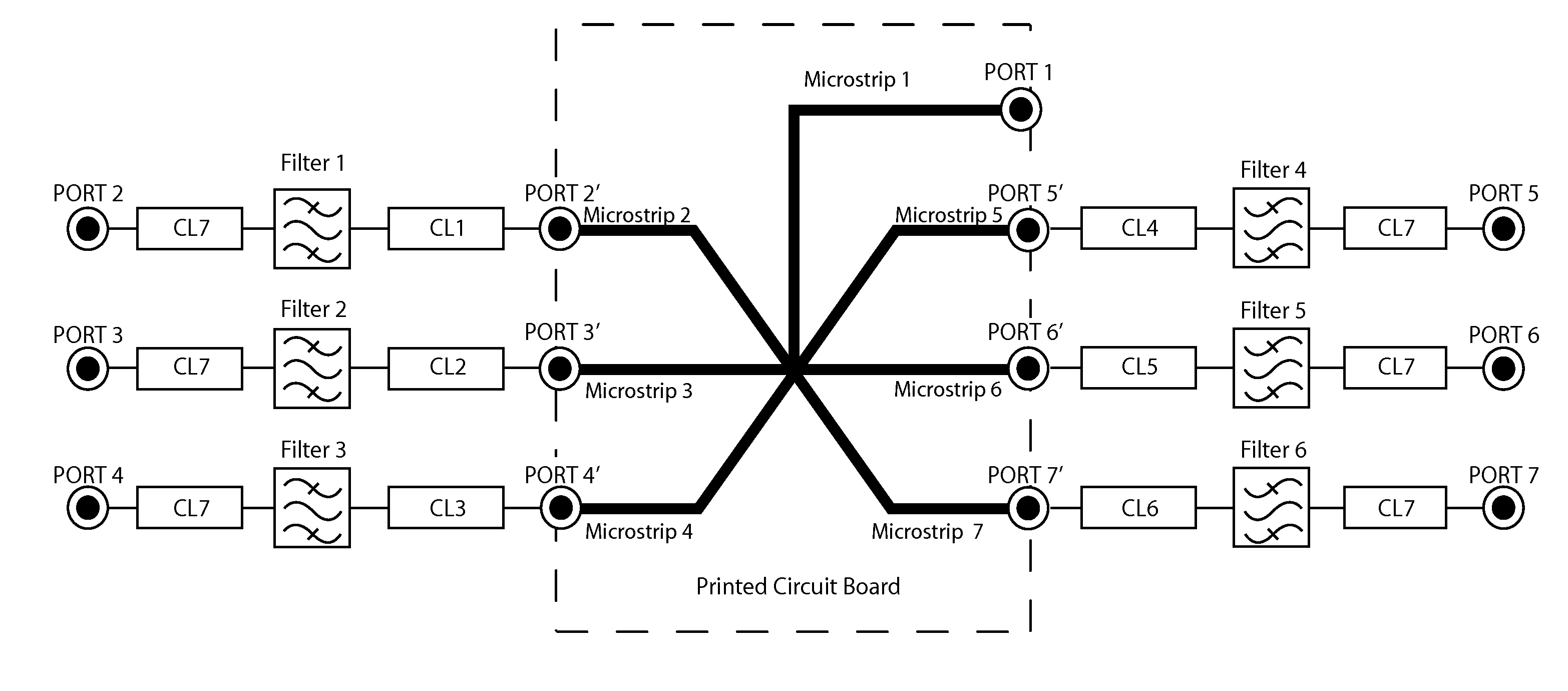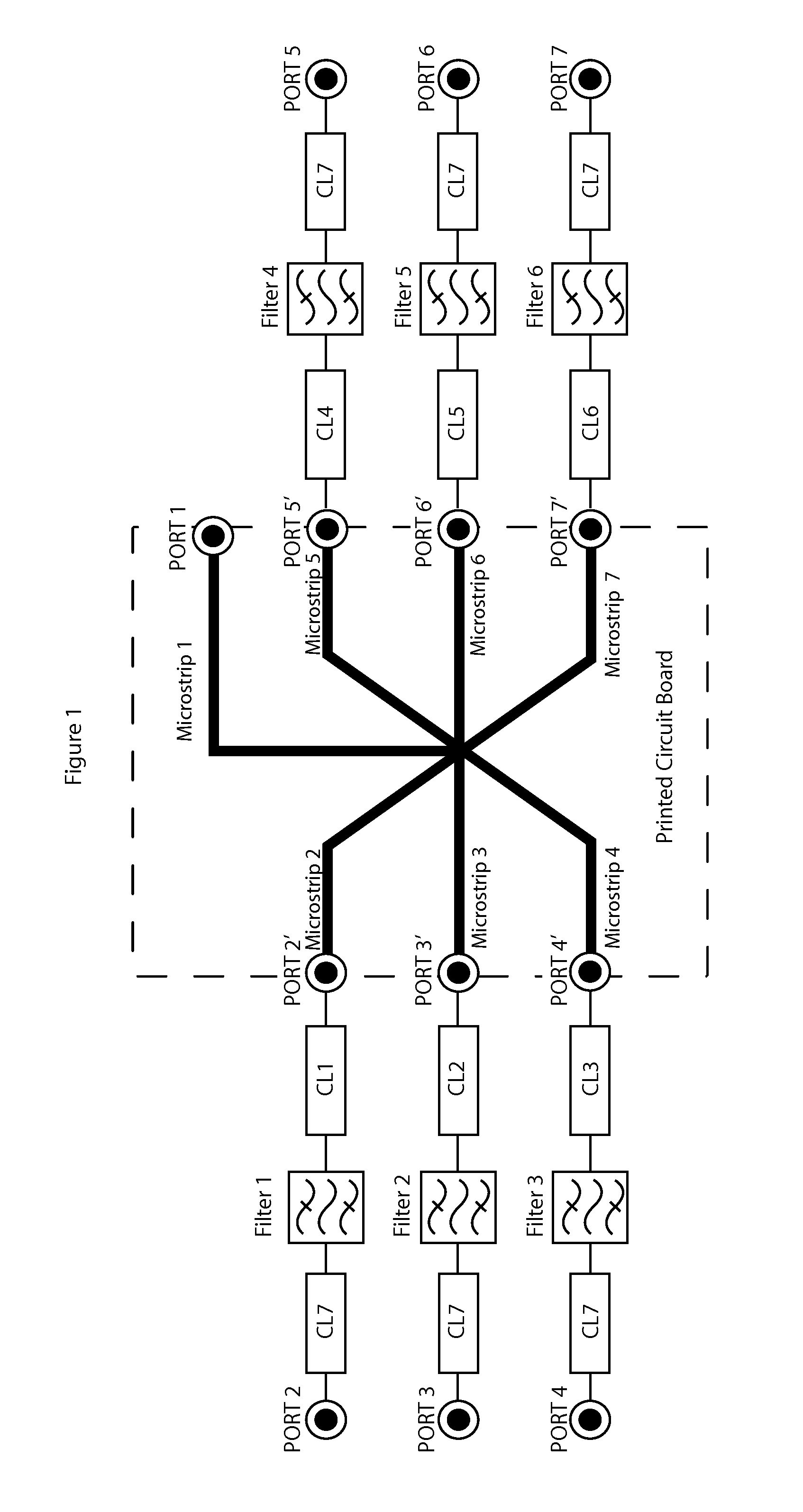Low loss RF transceiver combiner
a low-loss, rf-based technology, applied in the direction of waveguide type devices, coupling devices, basic electric elements, etc., can solve the problems of limited the usefulness of n-way power dividers, difficult and expensive realization of n-way power splitters/combiners, etc., and achieve the effect of minimal loss of insertion loss
- Summary
- Abstract
- Description
- Claims
- Application Information
AI Technical Summary
Benefits of technology
Problems solved by technology
Method used
Image
Examples
Embodiment Construction
[0013]Splitter / combiners are electronic networks that provide one common port and two or more independent ports. When RF power is applied to the common port, and delivered to the independent ports, then the circuit operates as a splitter. When power is applied to the independent ports the combination of individual signals is added linearly at the common port, then the circuit operates as a combiner. The combiner is not a mixer because it is linear, and thus does not produce additional frequency products.
[0014]There are three main types of RF splitter / combiners: Zero Degree (0°), Ninety Degree (90°) hybrid and One Hundred Eighty Degree (180°) hybrid. Zero-degree RF dividers split an input signal into two or more output signals that are theoretically equal in both amplitude and phase. Zero-degree RF combiners join multiple input signals to provide one output. Ninety-degree hybrids split an input signal into two equal amplitude output signals, which are 90° out of phase from each other...
PUM
 Login to View More
Login to View More Abstract
Description
Claims
Application Information
 Login to View More
Login to View More - R&D
- Intellectual Property
- Life Sciences
- Materials
- Tech Scout
- Unparalleled Data Quality
- Higher Quality Content
- 60% Fewer Hallucinations
Browse by: Latest US Patents, China's latest patents, Technical Efficacy Thesaurus, Application Domain, Technology Topic, Popular Technical Reports.
© 2025 PatSnap. All rights reserved.Legal|Privacy policy|Modern Slavery Act Transparency Statement|Sitemap|About US| Contact US: help@patsnap.com



